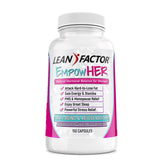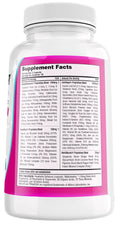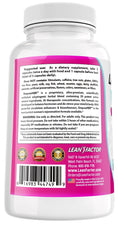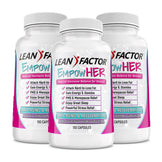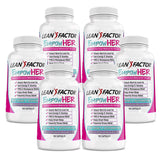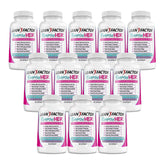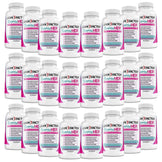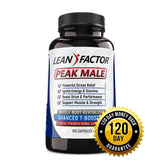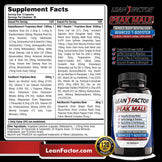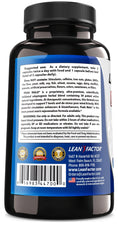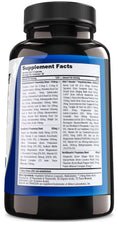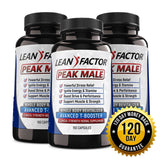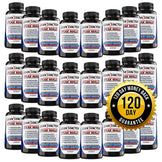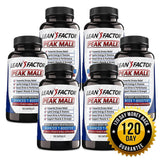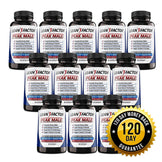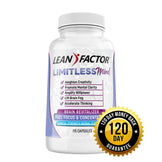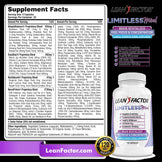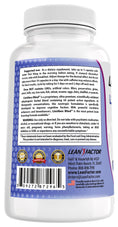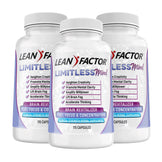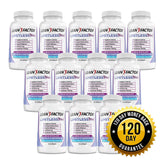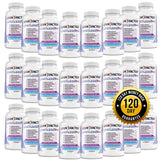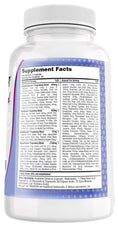Description
Description
If you have ever wondered what adaptogens do, you have come to the right place.
In this article, we will answer this question and help you understand the basics of adaptogens to empower you to make an educated choice in your adaptogen supplementation.
What does an adaptogen do?
Adaptogenic herbs may support the body's ability to have a healthy stress response.
They do this in 3 primary ways:
1) Adaptogens are nontoxic
2) Adaptogens increase the resistance of the hormonal and immune system
3) Adaptogens normalize body function no matter how external stressors have altered them.
The category of adaptogenic herbs falls under what one might call management and supportive herbs. This means that if you are under a lot of stress and consistently take adaptogens, you will see your body’s ability to adapt to life's daily stressors. Your main results from adaptogens come through the two C’s;
Now that you understand the basics let's dive into more critical details that make adaptogens unique is essential.
Adaptogens Defined: How adaptogens work
What makes all adaptogen plants unique is their ability to adapt to the harsh conditions in which they live. This adaptability allows them not just to survive but thrive and become robust plants under harsh conditions.
Research has shown that the species of adaptogens growing in their natural habitat are unique and more potent in certain adaptogenic phytochemicals than other species growing in less harsh conditions.
From the research on adaptogens, herbalists and scientists have learned how each adaptogen's energy and constituents (warming, cooling, drying, moistening) has allowed them to be used in a more specific targeted approach.
A true adaptogen must fulfill all the criteria for what adaptogens do. Today, we use terms and buzzwords out of context and often miscategorize herbs. A perfect example is how many herbs called adaptogens have either not fulfilled the correct criteria or only partially meet the requirements to be called a true adaptogen.
According to Israel Brekhman, MD, a leading authority on the effects of adaptogens, in order to be classified as an adaptogen, they must: 1. Be nontoxic, 2. Increase the resistance of the hormonal and immune system through a nonspecific response, and 3. Normalize body function.
One of the leading pioneers of stress research was Canadian professor Hans Selye, Ph.D., widely known for his contribution to stress analysis in developing the General Adaptation Syndrome (GAS) concept in 1936. This syndrome has a three-stage progression in the human stress response.
The four stages are as follows:
1. The alarm stage is the immediate reaction to a stressor known as fight or flight. This stage prepares the body for physical activity and releases stress hormones like adrenaline, noradrenaline, and cortisol to allow you to perform a specific task for survival. But due to its extreme nature, it can harm the immune system, which can leave a person at greater risk of illness during this phase. This is part of adapting when you take from one area and give to another to support survival, as described in the resistance stage below.3. The adrenal maladaptation or exhaustion phase: During this phase, the stressor has been present for an extended period, and the body begins to struggle because it is drained of reserves. This is a very dangerous stage because it can lead to much more significant issues, such as stroke, heart attack, and infections, if it is not resolved promptly.
4. Recovery and Healing: Donald Yance, Author of Adaptogens in Medical Herbalism, proposes the idea that a fourth stage should be added to Dr. Selye’s General Adaptation Syndrome (GAS) concept called Restore and Revitalize. Based on his clinical experience and observations regarding the application of adaptogenic compound formulas that include companion antioxidant compounds and their effect on the human stress response. He believes the value of these formulas for maintaining and restoring homeostasis “lies in their ability to enhance the four R’s.” His fourth stage hypothesis is that once you are back in an “anabolic positive” state, where energy recovery occurs, all energy systems and networks must be fully restored to complete the revitalization process.
Below is a simplified version of Yance’s four R’s concept for clarity and context.
- Recognize: When the body comes into contact with a pathogen, the first step is identifying the invader so the immune system can mount an appropriate response.
- Respond: Once the body is aware of the problem or imbalance, it mounts a response. We respond to everything.
- Recover: Once we respond to a stressor, we must recover from that response by turning down or shutting off certain metabolic switches and turning others back on.
- Restore or revitalize: All energy systems or organ networks require that we restore their energy reserves. If they are not sufficiently replenished, we will be unable to heal properly.
The hypothesis that can be drawn from both of these brilliant scientists’ work is that prolonged stress erodes constitutional weakness patterns, resulting in both predictable and unpredictable systemic effects that eventually lead to failing health.
So, this leads us to the next important question…
How can adaptogens help, and which ones are right for you?
Depending on the specific application, it’s essential to look at the mechanisms of action, the energetics of the herb, how other herbs in a formula can affect one another, and how that applies to YOU.
Stimulating adaptogens
In simple terms, stimulating adaptogens have a more robust and faster onset. If you lack mental and physical stamina, this type of adaptogen may be a good choice because it won’t be long before you feel the benefits. Suppose you are someone who gets overheated, angry, or has an explosive personality. In that case, stimulating adaptogens (depending on the specific situation) may not be your best first line of defense as an individual herb.
But, don’t rule out the use of stimulating herbs in a well-designed formula. These types of adaptogens, if misused as individual herbs, may exacerbate the issue. Again, to be clear, this does not necessarily mean someone with a more aggressive personality can’t use them. They can be effective without the potential exacerbating effects if properly used in a formula.
Some stimulating adaptogens are Rhodiola Rosea and Red Ginseng. In Chinese medicine, Red Ginseng is considered a warming herb that increases blood circulation and nerve growth factor activity. Rhodiola interacts with the HPA axis hypothalamic-pituitary-adrenal axis, nitric oxide production, and defense mechanism proteins.
Calming adaptogens
Calming adaptogens support a sense of calm for those who need support due to a high-stress lifestyle but are not necessarily low on vital energy. The effects of these adaptogens build over time. Calming adaptogens are primarily but not exclusively for those that need to rebuild critical energy.
Ashwagandha and Schisandra are perfect examples of calming adaptogens. In Ashwagandha, one of the primary constituents accredited for its adaptogen qualities is Withanolides. Withanolides are a group of compounds that support healthy stress hormone levels. The two main lactones contributing to its effects are Withaferin A, and Withanolide D. Other active constituents in Ashwagandha that have been classified as “anti-stress” agents are sitoindosides and acylsterygulcosides.
Schisandra, also called the five flavor berry because it is sweet, sour, pungent, salty, and bitter all at the same time, first gained its recognition as a “true” adaptogen in the 1960s as official medicine in the USSR. Schisandra may stand alone as an adaptogen for its unique qualities to produce a dual-action response. It responds to what you need; whether your system is hyperactive or deficient, it will support a physical and mental state of balance. Schisandra has stood the test of time and the harsh scientific critique of modern research around the world.
Adaptogens are the most well-researched, well-respected, time-tested, and proven category of herbs around the world to support and optimize longevity and wellbeing through the support of nonspecific physiological responses.
If used appropriately, adaptogens can be the modern-day savior and allow us to live happier and healthier lives.
